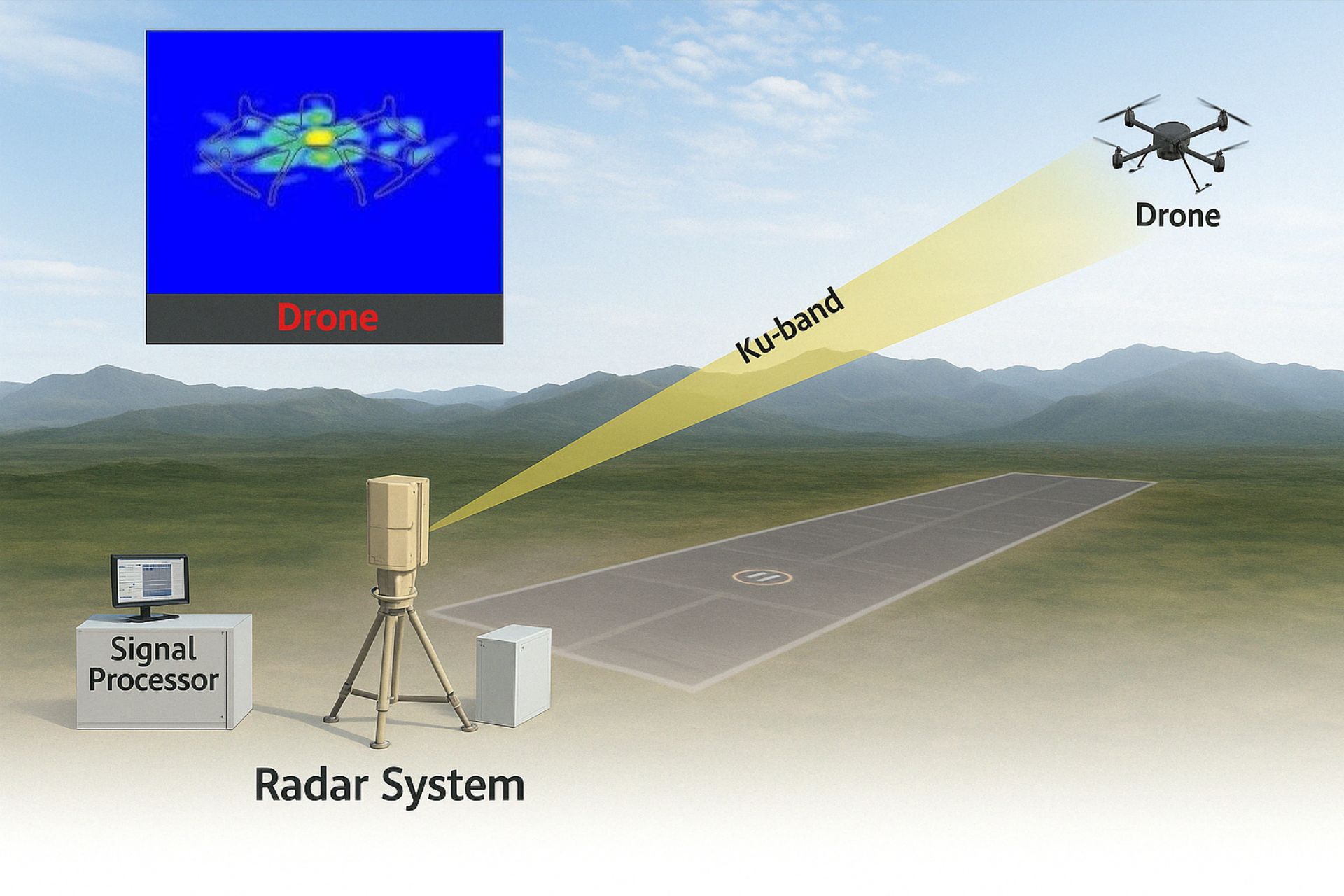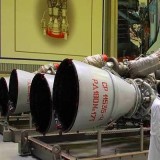South Korea Tests AI-Powered Radar Capable of Detecting Stealth Drones Several Kilometers Away

{loadposition bannertop}
{loadposition sidebarpub}
In a context marked by the rapid proliferation of unmanned aerial systems and growing regional tensions in East Asia, South Korea has announced the successful test of a new radar technology designed to significantly enhance its detection and surveillance capabilities. On April 17, 2025, the Agency for Defense Development (ADD) reported having conducted an outdoor demonstration of a photonic radar system powered by artificial intelligence, capable of detecting small drones located several kilometers away.
Follow Army Recognition on Google News at this link
An image released by the Agency for Defense Development on April 17, 2025, illustrates the operational flow of a new AI-powered photonic radar capable of detecting small drones from several kilometers away (Picture source: AAD)
This system, under development since 2022, is based on disruptive technology. Unlike conventional radars that rely on electromagnetic waves, the photonic radar uses modulated light signals, which provide higher resolution, increased resistance to electronic countermeasures, and improved detection of discreet or miniaturized aerial targets. Combined with AI-driven analytical algorithms, the system is designed to identify flying objects with very low radar signatures, even in cluttered or low-contrast environments.
According to ADD, the trial successfully detected small drones at long range, although specific details such as the exact distance or the size of the aerial vehicles were not disclosed due to military security concerns. This confidentiality reflects the sensitive nature of the program, which aims to address a critical gap in South Korea’s aerial surveillance apparatus: the detection of low-altitude threats that often evade traditional optical or infrared sensors.
This development is part of a broader effort to respond to the increasing frequency of drone incursions, whether accidental, hostile, or military in nature. The Demilitarized Zone between North and South Korea, as well as disputed maritime areas in the region, have become frequent operational spaces for drones conducting reconnaissance or disruptive missions. In light of this evolution, the need for a discreet, responsive, and all-weather detection system has become a strategic priority for Seoul.
An image released by ADD alongside the announcement illustrates the operational flow of the radar system, highlighting the integration of photonic modules, onboard algorithmic analysis, and real-time visualization tools. While no additional information has been provided regarding the program’s roadmap or potential for serial production, this successful test marks a key milestone in the development of a domestic solution to emerging airborne threats.
In the long term, this technological development could strengthen not only South Korea’s territorial defense capabilities but also its defense industry’s position in the advanced detection sector. As the United States, China, and several European countries invest heavily in next-generation radars and counter-drone systems, South Korea is demonstrating its intention to maintain technological strategic autonomy while preparing its armed forces for operations in increasingly sensor-saturated and drone-dense environments.
This test represents a demonstration of technological maturity by ADD. Its efforts to integrate artificial intelligence and photonic technology into defense systems may provide South Korea with a significant operational capability in confronting low-signature aerial threats. In a continuously evolving security environment, the ability to detect small drones at long range is becoming a central requirement for tactical superiority and technological sovereignty.

{loadposition bannertop}
{loadposition sidebarpub}
In a context marked by the rapid proliferation of unmanned aerial systems and growing regional tensions in East Asia, South Korea has announced the successful test of a new radar technology designed to significantly enhance its detection and surveillance capabilities. On April 17, 2025, the Agency for Defense Development (ADD) reported having conducted an outdoor demonstration of a photonic radar system powered by artificial intelligence, capable of detecting small drones located several kilometers away.
An image released by the Agency for Defense Development on April 17, 2025, illustrates the operational flow of a new AI-powered photonic radar capable of detecting small drones from several kilometers away (Picture source: AAD)
This system, under development since 2022, is based on disruptive technology. Unlike conventional radars that rely on electromagnetic waves, the photonic radar uses modulated light signals, which provide higher resolution, increased resistance to electronic countermeasures, and improved detection of discreet or miniaturized aerial targets. Combined with AI-driven analytical algorithms, the system is designed to identify flying objects with very low radar signatures, even in cluttered or low-contrast environments.
According to ADD, the trial successfully detected small drones at long range, although specific details such as the exact distance or the size of the aerial vehicles were not disclosed due to military security concerns. This confidentiality reflects the sensitive nature of the program, which aims to address a critical gap in South Korea’s aerial surveillance apparatus: the detection of low-altitude threats that often evade traditional optical or infrared sensors.
This development is part of a broader effort to respond to the increasing frequency of drone incursions, whether accidental, hostile, or military in nature. The Demilitarized Zone between North and South Korea, as well as disputed maritime areas in the region, have become frequent operational spaces for drones conducting reconnaissance or disruptive missions. In light of this evolution, the need for a discreet, responsive, and all-weather detection system has become a strategic priority for Seoul.
An image released by ADD alongside the announcement illustrates the operational flow of the radar system, highlighting the integration of photonic modules, onboard algorithmic analysis, and real-time visualization tools. While no additional information has been provided regarding the program’s roadmap or potential for serial production, this successful test marks a key milestone in the development of a domestic solution to emerging airborne threats.
In the long term, this technological development could strengthen not only South Korea’s territorial defense capabilities but also its defense industry’s position in the advanced detection sector. As the United States, China, and several European countries invest heavily in next-generation radars and counter-drone systems, South Korea is demonstrating its intention to maintain technological strategic autonomy while preparing its armed forces for operations in increasingly sensor-saturated and drone-dense environments.
This test represents a demonstration of technological maturity by ADD. Its efforts to integrate artificial intelligence and photonic technology into defense systems may provide South Korea with a significant operational capability in confronting low-signature aerial threats. In a continuously evolving security environment, the ability to detect small drones at long range is becoming a central requirement for tactical superiority and technological sovereignty.




